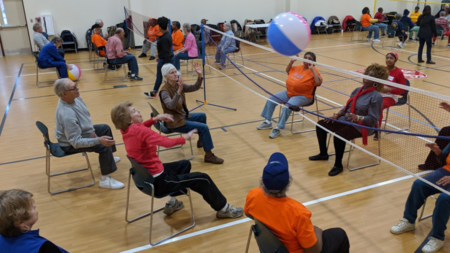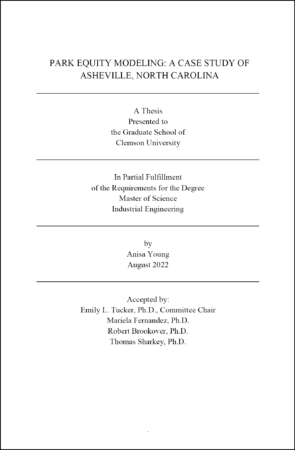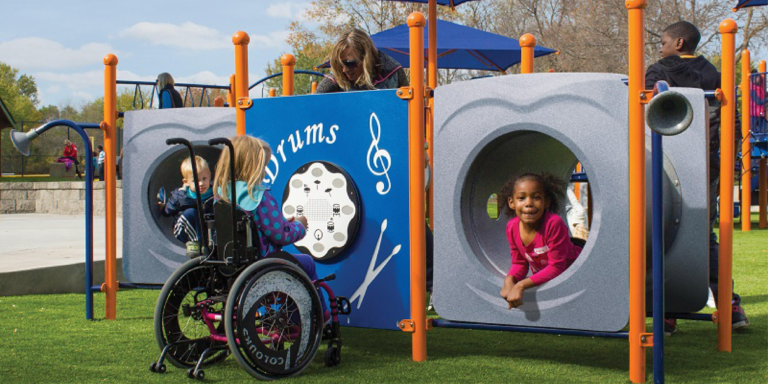When Clemson University researchers approached Asheville Parks & Recreation (APR) to serve as a case study for park equity modeling, it was a no-brainer that the department would participate.
 “Alongside other factors, our agency considers accessible design, gender inclusion, and racial equity into account when forming policies and making investments in parks, programs, and other facilities,” according to D. Tyrell McGirt, APR Director. “APR has long provided services responsive to the entire community’s needs. However, with some parks that date to the 1890s, we had to become more intentional about providing tools for our team to make decisions that preserve the cultures and advance the resilience of all neighborhoods throughout our city. The City of Asheville manages more than 65 public parks, 10 community centers, over 10 miles of paved greenways, and other unique recreation facilities and green spaces, so it’s a good representative system to study park distribution and equity initiatives that can bring the essential benefits of parks and recreation to everyone.”
“Alongside other factors, our agency considers accessible design, gender inclusion, and racial equity into account when forming policies and making investments in parks, programs, and other facilities,” according to D. Tyrell McGirt, APR Director. “APR has long provided services responsive to the entire community’s needs. However, with some parks that date to the 1890s, we had to become more intentional about providing tools for our team to make decisions that preserve the cultures and advance the resilience of all neighborhoods throughout our city. The City of Asheville manages more than 65 public parks, 10 community centers, over 10 miles of paved greenways, and other unique recreation facilities and green spaces, so it’s a good representative system to study park distribution and equity initiatives that can bring the essential benefits of parks and recreation to everyone.”
In 2016, Asheville voters overwhelmingly approved a $17 million general obligation bond to support improvements to parks and community centers, acquire land for a new park, and replace outdoor courts, playgrounds, and ballfields – many of which had not seen any major upgrades in several years. Equity scores were incorporated into determining project priorities.
In collaboration with colleagues from Clemson University Department of Parks, Recreation, and Tourism Management, Anisa Young explored the effects of available budgets, planning processes, strategic demographic priorities, and level of access to quality parks and green spaces. While tools already exist to identify individual neighborhoods or areas that may benefit from more park access or improvements, there is not an easy-to-use program that takes a 365-degree view of community inequities, budget, existing infrastructure, and environmental considerations. The study presents the results of multiple recommendations for new park locations in Asheville.
 Over the course of 2022, APR staff and the research team studied user-defined criteria and goals. By applying an equity-focused objective and overall goal to minimize weighted deviations, Asheville’s case study may be generalizable to other cities. This study serves as the first step in development and incorporation of mathematical modeling to achieve social goals within recreational settings. Park Equity Modeling: A Case Study of Asheville, North Carolina is available to study on Clemson Libraries’ TigerPrints.
Over the course of 2022, APR staff and the research team studied user-defined criteria and goals. By applying an equity-focused objective and overall goal to minimize weighted deviations, Asheville’s case study may be generalizable to other cities. This study serves as the first step in development and incorporation of mathematical modeling to achieve social goals within recreational settings. Park Equity Modeling: A Case Study of Asheville, North Carolina is available to study on Clemson Libraries’ TigerPrints.
“I’m proud that the APR team didn’t hesitate when approached to serve as a model for improving equitable access to local parks,” said McGirt. “Our guiding vision is to be North Carolina’s center of parks and recreation innovation. The data collected in the case study is invaluable, not only to our community, but to other parks and recreation professionals around the country.”
Driven by the promise that Asheville is a better and safer place when everyone from infants to retirees has the opportunity to be supported, healthy, and successful, APR was the first nationally-accredited municipal recreation department in the United States. A full list of APR programs and activities can be viewed online.
Established in 1956, APR manages a unique collection of more than 65 public parks, playgrounds, and open spaces throughout the city in a system that also includes full-complex recreation centers, swimming pools, Riverside Cemetery, sports fields and courts, and community centers that offer a variety of wellness-, education-, and culture-related programs for Ashevillians of all ages. With 10 miles of paved greenways and numerous natural surface trails, its complete portfolio acts as the foundation of a vibrant hub for the people of Asheville to connect with their neighbors and explore the natural beauty of a livable and walkable city.
